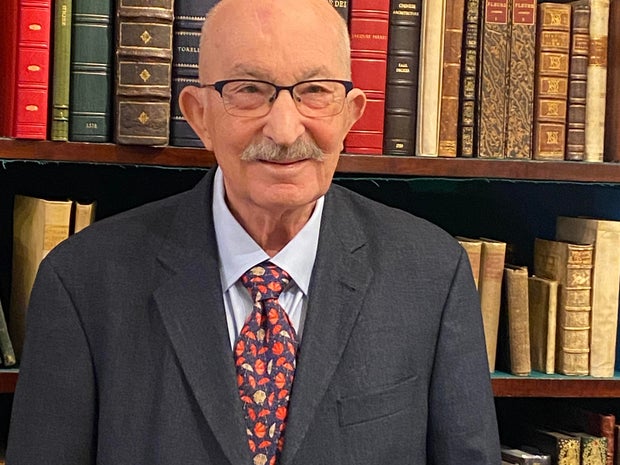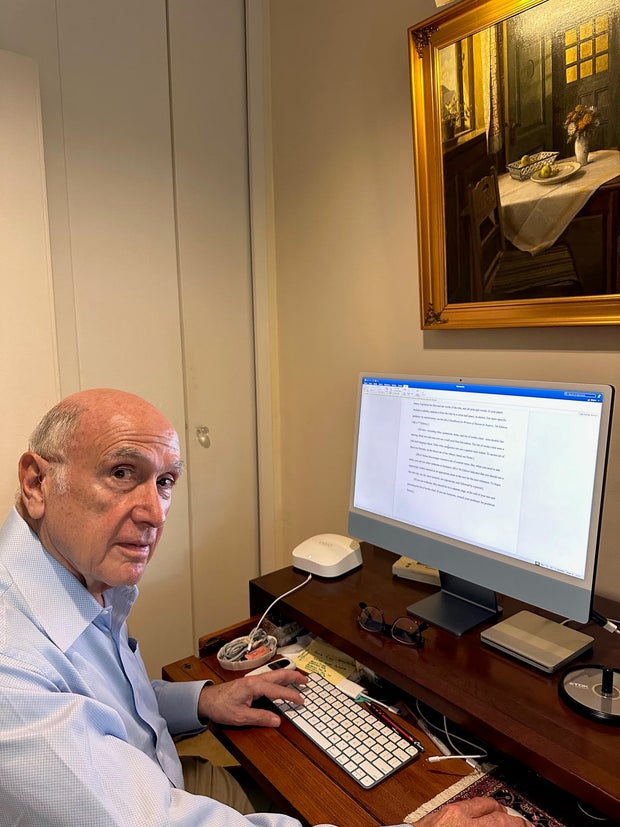
JERUSALEM — The latest hostage video released by Hamas is disturbing, manipulative and revealing. Three women sit on cheap plastic chairs pushed against a tiled wall, somewhere in Gaza. It looks like a waiting room for some fearful appointment.
Are they underground, in the militants’ vast tunnel network? Unclear. There’s an electrical outlet. The lighting is bright. The captives are dressed in clean clothes. They appear uninjured, physically at least.
The woman in the center, Danielle Aloni, 44, speaks directly to the camera. She begins, “Hello, Bibi Netanyahu, we are in captivity, in Hamas captivity, 23 — how many days? — 23 days … ”
This helps establish when the video was made — or when their captors planned to release it, on Monday. In the short clip, Aloni delivers a harsh message to Israeli Prime Minister Benjamin Netanyahu, describing his “failures.” By the end of the video, Aloni is shouting, her voice rough: “Free, free us now! Free their civilians, free their prisoners, free us, free us all, let us return to our families now. Now! Now! Now!”
Aloni was captured along with five other family members, including 3-year-old twins, from the Nir Oz kibbutz during Hamas’s attack on southern Israel on Oct. 7 — the deadliest day in the country’s history.
The release of the 75-second video Monday created a rush of emotions in Israel. It was a gut punch. The Prime Minister’s Office called the video “cruel psychological propaganda” and again compared Hamas to ISIS.
Still, one father was ecstatic to see his daughter alive.
One mother said her daughter was shown without glasses — and worried that she has not been able to see clearly since being captured more than three weeks ago.
The video circulated widely on social media here, though Israel’s TV channels did not air it. Israeli news sites described the contents, as The Washington Post is doing, and showed a screenshot and listed the three women’s names, which were confirmed by the government.
The Israeli public expressed revulsion, but they also understood what Hamas was doing.
Danny Orbach, a military historian at Hebrew University, said there is an “economy of hostage-taking” governed by a cynical logic.
By releasing the video, “Hamas is trying to increase demand” — to push Israelis to pressure their government into a cease-fire and negotiations — to remain in power and see its own prisoners freed from Israeli jails, Orbach said.
He pointed out that Israelis are not new to having hostages taken and hostage negotiations. Many approached the video with hard-earned skepticism.
Everyone in Israel knows the case of Gilad Shalit, the soldier captured by Hamas in 2006 and freed in 2011 in exchange for 1,000 Palestinian prisoners.
Israelis didn’t need to be told that the words spoken on the video were what the Hamas captors wanted them to hear. “It is clear to all but the most gullible people that the hostages are under duress,” Orbach said.
While Israel has dealt with numerous hostage negotiations, this crisis is unprecedented in magnitude.
The Israeli military says it has identified at least 239 hostages held in Gaza. It is unclear how many are being held by Hamas, and how many by Islamic Jihad and other smaller militant groups.
Hamas experts said the video appeared rushed and rudimentary, perhaps made quickly in response to Israel’s rescue of a captive soldier Sunday.
Though the images are grim, they said, it was good to see the three captives healthy, suggesting that Hamas appreciated their value. The group might also be trying to soften its international image, after body-camera footage from its fighters revealed the savagery of their Oct. 7 attacks on Israeli civilians.
In the coming days, some experts suspect that Hamas might release more older, frailer captives — seen by the militants as more of a burden than an asset.
Ronni Shaked, an expert on Hamas at the Harry S. Truman Research Institute in Jerusalem, said Hamas knows what it’s doing in its propaganda.
Though the video was not broadcast on television, “I don’t know a single friend who hasn’t seen it,” he said.
In the video, the hostage seated on the left, Rimon Kirsht, 36, nods her head in apparent agreement with her fellow captive’s words, but her hands also appear to be clasped so tightly that her fingers whiten. She and her husband, Yagev, were taken hostage from the Nirim kibbutz.
People “were shocked to see the trembling of one of the women,” Shaked said. “It makes your stomach hurt, and that pain makes you say, ‘We have to do something.’”
Shaked said the Israeli public cares deeply about the hostages. Their plight taps into deep collective trauma. “The public cares more about them than the outcome of the war,” he said.
Experts suspect that Hamas gave the captives a rough script. “The first sentence was expected,” and included a call for Netanyahu to make a prisoner exchange, but “their emotions spoke” afterward, Shaked said.
“They’re showing us the hostages now to play with our emotions again, so this emotion translates into pressure on the government to agree to a cease-fire, to create the dynamic of a cease-fire, in order to ensure the continued existence of Hamas,” he said.
At a news conference in Tel Aviv held by relatives of the three women who appeared in the video, Ramos Aloni, the father of Danielle Aloni, said: “We felt relieved to see that she’s alive and that we’re seeing her, because until today we didn’t know any details at all."
This is not the first hostage tape. On Oct. 16, Hamas posted a video showing 21-year-old Mia Schem, a French Israeli tattoo artist, after she was treated for a wounded arm.
She, too, spoke to the camera. “I’m being cared for. I’m getting medications,” she said. “I’m only asking to be returned home as soon as possible, to my family, to my parents, to my siblings. Please get me out of here as soon as possible.”
Schem was snatched by Palestinian militants while attending a rave concert in the desert near the Re’im kibbutz, where Hamas gunmen killed at least 260 festivalgoers.
When the video appeared, Schem’s mother told the Independent, “I started screaming, fell on the floor and screamed. … I saw my baby. And then we started singing, crying and being happy that she was alive.”
Schem is still being held somewhere in Gaza.
Hamas hostage videos are cruel, manipulative, revealing. Experts expect more. - The Washington Post
Read More




















